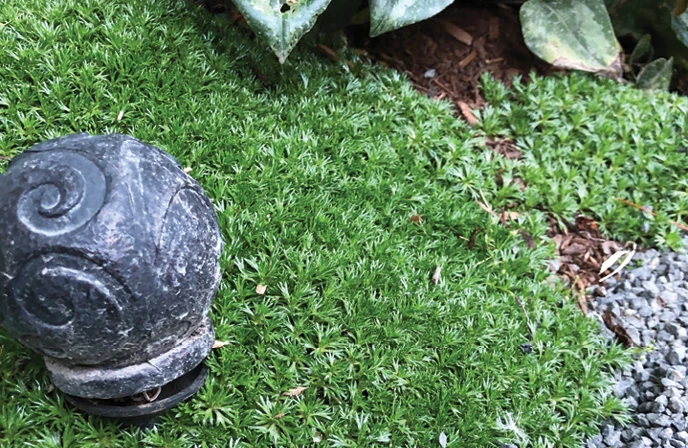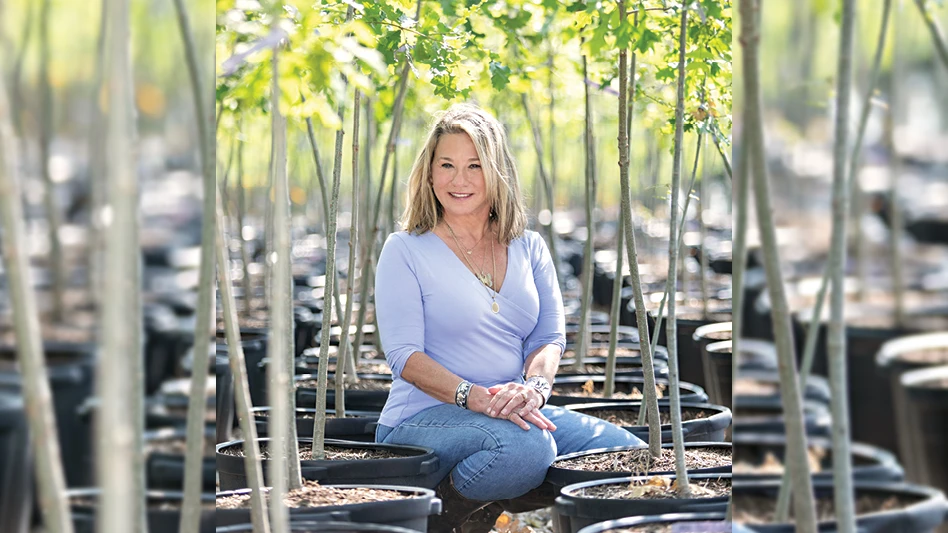

I have developed a presentation called “Fantastic Groundcovers and Where to Find Them” that I gave recently at the Farwest Show in Portland, Oregon. Among the 60-some groundcovers that I talk about, Azorella trifurcata ‘Nana’ stands out as one of my favorites. Azorella is a lovely, low-growing, evergreen groundcover that has yellow flowers in late spring and early summer. It grows quite uniformly, so much so that large plantings of it almost appear AstroTurf-like. It is rugged enough to withstand considerable foot traffic and is therefore a suitable plant for gardeners wanting to replace grass lawns with alternative plants that don’t need to be mowed. It is a perfect plant for alpine rock gardens and crevice gardens and will do well in gaps between paver stones.
Azorella trifurcata is native to Chile and Argentina, including the Falkland Islands and Tierra del Fuego. There is some confusion in the trade as to the correct name for this plant. I have seen it tagged in garden centers as Bolax gummifera, which I think is incorrect. To be clear, I’m not a taxonomist, but I have researched this discrepancy and feel certain from reviewing photos and descriptions that these plants, while similar, are indeed different. Another species, Bolax glebaria ‘Nana’ is likely synonymous with Azorella trifurcata ‘Nana’. Don’t you wish taxonomists would just leave things alone sometimes?
Azorella is a beautiful and useful groundcover and deserves more notoriety than it’s getting. I’m designing a crevice garden that will be featured at the Northwest Flower and Garden Show in Seattle next February, and Azorella trifurcata ‘Nana’ will be featured prominently.
Why grow Azorella trifurcata?
- It’s an evergreen groundcover.
- It’s deer resistant.
- It has lovely yellow flowers from late spring to early summer.
- It tolerates moderate foot traffic.
- It’s easy to grow and maintain in nursery production and in the garden.
- It’s drought tolerant.

Mark Leichty is the Director of Business Development at Little Prince of Oregon Nursery near Portland. He is a certified plant geek who enjoys visiting beautiful gardens and garden centers searching for rare and unique plants to satisfy his plant lust. mark@littleprinceoforegon.com

Explore the October 2019 Issue
Check out more from this issue and find your next story to read.
Latest from Nursery Management
- The HC Companies, Classic Home & Garden merge as Growscape
- Eason Horticultural Resources will now officially be known as EHR
- BioWorks receives EPA approval for new biological insecticide for thrips, aphids, whiteflies
- Ellen Mackenbach-Lakeman appointed new CEO of Dümmen Orange
- Southern Garden Tour sets 2025 dates for trial garden open houses
- New book explores plants that thrive in Rocky Mountains
- American Floral Endowment establishes Herman Meinders Memorial Tribute
- These companies are utilizing plastic alternatives to reduce horticultural waste






